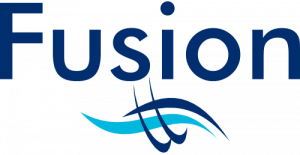Download our whitepapers or see out latest articles
Choose by category
Customer Aqusition
- Creating a usable marketing database for today’s complex multi-channel world
- How to measure marketing campaign responders more effectively
- Understanding your digital ads’ true return on investment
Customer Retention
- How to use data to improve your customer experience
- Targeting consumers based on their personality types
- Best Practices of Digital CRM
Insight
- How to measure Out of Home within your marketing mix?
- Three things to help your econometrics provider deliver better results
- How do you consider CRM in attribution?
Tech
- How to use AI to support strategic marketing planning
- Will ChatGPT be replacing analytical jobs?
- How artificial intelligence is improving marketing
Recent articles
- How to use AI to support strategic marketing planning
- How to measure marketing impact on retail vs. online sales
- How to measure brand activity in a performance marketing world
- How to measure offline marketing channels
- How to measure Out of Home within your marketing mix?
Recent white papers
Measuring the impact of a marketing channel in relation to others
 In the second of our four part series of guides on mastering marketing attribution tracking, The Fusion Analytics Team take a look at the.
In the second of our four part series of guides on mastering marketing attribution tracking, The Fusion Analytics Team take a look at the.
- challenges when measuring today’s marketing campaigns
- Individual channel nuances and measuring their effectiveness – Direct Mail, Email List Purchases, Online Advertising, Display Advertising, TV Spot Times
- Measuring the uplift of an individual channel in the marketing mix context
Read: Measuring the impact of a marketing channel in relation to others
Building an attribution framework that meets your business needs

The Fusion Analytics team have written a four part series of guides aimed at explaining in simple terms how to track customer attribution. The first guide – Building an attribution framework that meets your business needs – goes back to basics to reveal the foundation stones which make an attribution framework truly effective.
It covers areas such as:
- Understanding the customer buying nuances for different types of brands and purchases
- Broadening the traditional marketing channel evaluation methods and approaches
- Questions that should be at the heart of a robust and effective attribution framework
- Setting the right objectives to measure your marketing channels’ effectiveness
- Rethinking the marketing budgeting process as a result
Along the way the guide features helpful examples and checklists to enable you to evaluate and enhance your own attribution framework. Click here to view the Guide
3. Planning and Applying your Segmentation
Here’s a snippet of the full report:”Segmenting your file is a great way to understand your customers better and use that knowledge to find more people like them or to have a better relationship with them. However it gets confusing when you start to hear the various types of segmentation that people use; geographic, demographic, behavioural, RFM along with many more. This article strips back the core requirements of a segmentation, to explain why it is important to have a segmentation and how to define the best structure for you. To help you define your requirements we use the concepts of “factors” which build the segment and “attributes” which help you to understand a segment.” Contact us to get a free copy of the full report.
4. How to choose your dashboard?
Here’s a snippet of the full report:
“When choosing how to visualise your data deciding between the overwhelming array of services and products can be daunting. Many try to give the same results for extortionate prices and others may lack the functionality your business needs. The reporting market also tends to be focused on finding trends and insights within your own business data; making it extremely difficult to test the product.

It can also make it difficult for consulting companies to use their services. Why is this an issue? It becomes an issue when private information must be shared to online data visualisation sites voiding your data protection policies, such as Power BI and Slemma – I’ll go into more detail about them later. In addition, many try to keep you the customer on their sites ecosystem and try to make you fully dependent on their services without allowing for more in-depth functionality others could provide.”
Contact us to get a free copy of the full report.
Our full library of articles
- How to use AI to support strategic marketing planning Posted in: Article, Tech
- How to measure marketing impact on retail vs. online sales Posted in: Article
- How to measure brand activity in a performance marketing world Posted in: Article
- How to measure offline marketing channels Posted in: Article
- How to measure Out of Home within your marketing mix? Posted in: Article, Insight
- What needs to be at the top of your Marketing and Analytics agenda for 2024? Posted in: News
- Big Data London 2023 Posted in: Article
- Exploring the use of Augmented Analytics Posted in: Article
- How CFOs can help plan Marketing budgets Posted in: Article
- Three things to help your econometrics provider deliver better results Posted in: Attribution, Insight
- Google Analytics 4 Switch is imminent! Posted in: Google Analytics
- How do you consider CRM in attribution? Posted in: Attribution, Insight, Uncategorized
- Will ChatGPT be replacing analytical jobs? Posted in: Tech
- 2023 predictions……. Posted in: News
- Why is attribution todays “hot topic”? Posted in: Attribution, Insight
- How to make Attribution actionable Posted in: Insight
- Implications of the Government’s proposed new digital rules and data protection regime Posted in: Insight
- How artificial intelligence is improving marketing Posted in: Tech
- How to avoid Apple’s IOS15 affecting your email campaigns’ effectiveness Posted in: Tech
- Creating a usable marketing database for today’s complex multi-channel world Posted in: Customer Acquisition
- Our key takeaways from the Epsilon Abacus Insight Day Posted in: Insight
- How to use data to improve your customer experience Posted in: Customer Retention
- How to embrace data-driven marketing decisions in your business Posted in: Insight, Uncategorized
- Google Analytics 4 (GA4) and why your business needs to act quickly Posted in: Tech
- Building customer trust in the way your organisation manages data Posted in: Tech
- How to cope with the demise of third-party cookies Posted in: Tech
- Season’s Greetings Posted in: News
- Marketing data management 2022 predictions Posted in: Uncategorized
- How to improve the accuracy of your website’s analytics Posted in: Article
- Harmonising Multiple Analytics Reporting Platforms Posted in: Article, Google Analytics, Problem Solving
- Measuring the impact of a marketing channel in relation to others Posted in: Whitepapers
- Success stories in multi-website management Posted in: Article
- How to measure marketing campaign responders more effectively Posted in: Article, Customer Acquisition
- Mastering marketing attribution tracking Posted in: Whitepapers
- Understanding your digital ads’ true return on investment Posted in: Article, Customer Acquisition, Problem Solving
- A new era for data management: reconciliation Posted in: Article
- Marketing attribution approach selection tool Posted in: Customer Acquisition, Problem Solving
- Targeting consumers based on their personality types Posted in: Case Studies, Customer Retention
- A quick-fix for agencies’ expertise gaps Posted in: Article, Problem Solving
- Digging for gold inside your website code Posted in: Article, Google Analytics
- Lessening uncertainty in business and crisis planning Posted in: Article
- Why affiliates are breaking your attribution reporting (and how to fix it) Posted in: Article, Customer Acquisition
- How to build your own pandemic forecasting model in excel Posted in: Whitepapers
- Insights to be gained from integrating surveys with website traffic Posted in: Article, Insight
- When outsourcing analytics makes commercial sense Posted in: Article
- Marketing data management predictions for 2020 Posted in: Article
- Common challenges with data project pitches Posted in: News
- Understanding significance testing in marketing Posted in: Article, Problem Solving
- How accurately are you predicting your customers’ Christmas purchases? Posted in: Article, Customer Acquisition
- 5% Posted in: Article
- WPS London 2019 – Recording Posted in: PR
- Key learning points from the Epsilon Abacus Insights Day Posted in: Insight, News
- Reducing a website’s bounce rate Posted in: Article
- World programming – London 2019 Event Posted in: News
- How to get more conversions on your website’s product pages Posted in: Article
- Google Analytics Alternative? Posted in: Article, Google Analytics, Tech
- Take-aways from the Direct Commerce Association annual summit Posted in: News
- Hot topics from the DCA’s Silver Marketing Lifestyle Day Posted in: News
- Who says rental list modelling can’t be more versatile Posted in: Case Studies, Insight
- Common problems with Google Analytics’ digital audience reporting Posted in: Article, Google Analytics
- Why one all-encompassing attribution model is elusive Posted in: Article
- Join our auto tagging beta test to be at the cutting edge of digital tracking Posted in: News
- 3 things to have on your radar for 2019 Posted in: Article
- What a year that was! Posted in: Article
- Spotting the return of a long-lost customer Posted in: Article
- Reducing your ‘abandon basket’ rate Posted in: Article, Insight
- Why your marketing analytics may be failing you Posted in: Article
- The hidden costs in some free analytics software Posted in: Article
- Fusion Analytics teams up with Coniak to give businesses better loyalty programme reporting Posted in: Article
- Tracking Customer Data Across Multiple Domains Posted in: Article, Case Studies
- How to Tackle Customer Data on Separate Systems Posted in: Article
- 3 Common Mistakes Made When Implementing Web Governance Posted in: Article, GDPR, Problem Solving
- Tell-Tale Signs That You Need Web Governance Posted in: Article, Problem Solving
- Is GDPR Going to Create More Data Silos? Posted in: Article, Problem Solving
- Data Quality Measures – Help or Hindrance Posted in: Article
- PR – MTEX – 16/02/2018 Posted in: PR
- Innovations Using External Data Posted in: Case Studies, Whitepapers
- MTEX Posted in: PR
- 10 Reasons to Outsource your Analytics Posted in: Problem Solving
- GTM! Why Should ‘you’ be using this FREE Tool? Posted in: Google Analytics, Whitepapers
- Does 2018 mark the Death of the Cookie? Posted in: Whitepapers
- The Nordique Posted in: Case Studies
- Mo Data Mo Problems? Posted in: Problem Solving
- What is Big Data? Posted in: Whitepapers
- This is why LTV data can add value to your Business Posted in: Case Studies
- Media Attribution: How Dumb or How Smart is Your Current Method of Choice? Posted in: Whitepapers
- Three impossible questions about your data to get right Posted in: Whitepapers
- Analytics and Market Research Posted in: Case Studies
- 8 things for Travel operators to do before January Posted in: Case Studies
- 4 Reporting issues you can overcome in 2017 Posted in: Tech, Whitepapers
- Best Practices of Digital CRM Posted in: Customer Retention, Whitepapers
- 3 ways to improve your research with web data Posted in: Insight, Whitepapers
- Streamlining your reporting process Posted in: Case Studies
- Should I set up a new GA account? Posted in: Whitepapers
- Finding Friday Posted in: Case Studies
GET IN TOUCH TO GET THE FULL REPORT

